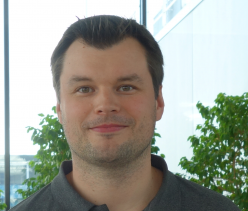Disturbances in cell growth regulation occur in all multicellular organisms. The basic mechanisms are the same regardless of the origin of the growth signal, such as the fungus causing witches’ brooms.
What directs the growth of cancer cells?
In cancer cells, the growth regulation is altered and the cells divide in an uncontrolled manner independently of extracellular growth signals. Current research seeks to find methods to identify the prerequisites for the growth of cancer cells. Research knowledge helps us to understand the spreading of cancer and to develop new targeted drugs for the treatment of cancer.Published: 3.2.2022
Writer: Otto Kauko
In multicellular organisms, the growth and division of cells is highly regulated. The majority of cells in adult animals are differentiated to perform a particular function, and they no longer divide. The signal transduction mechanisms inside the cells allow selected growth signals from the outside to enter the cells, and the growth potential of billions of cells must be held under control for up to decades.
A central mechanism for the intracellular transduction of growth signals is protein phosphorylation. Different tissues have distinct growth needs and respond differently to extracellular growth signals. Several different pathways have evolved for signals mediated through protein phosphorylation for the purposes of regulating the growth and regeneration of different tissues. These signalling pathways inevitably have shared effects as they are capable of initiating functions that occur in all cells that divide. For example, for the purposes of cell division, all types of cells have to copy their own DNA and other molecules necessary for their function.
In cancer cells, the growth regulation is altered and the cells divide in an uncontrolled manner independently of extracellular growth signals. Uncontrolled cell division is typically the result of mutations that cause the continued activation of enzymes serving as catalysts for phosphorylation reactions. The continued transmission of growth signals may, in some cases, be inhibited by drugs, but unfortunately, the therapeutic response to targeted drugs used to block phosphorylation signalling is often short-lived. In such situations, there are cells within the tumour that depend on an alternative route for growth signal transduction, and the drug does not inhibit their growth.
The activation of growth signal pathways in cancer has been extensively studied, but the majority of the end points of growth signalling pathways still remain unknown. This is partly due to the fact that they are not observed in cancer genetics analyses. Mutations are primarily found in the early steps of the signalling pathways because, when advancing, the signal becomes distributed to several target proteins. On the other hand, the effects of various signalling pathways also converge.
Challenging systematic analytics
The cell growth blockers need not specifically target the enzyme that is activated due to a mutation, rather, it is sufficient that the treatment inhibits the growth of cells. In my own research, I have focused on mapping the shared end-events of various growth signal pathways, in other words, the steps where the growth signal translates into the cell functions. Systematic analysis is challenging due to the huge number of intracellular phosphorylation events. Therefore, my research team focuses on the phosphorylations that appear in all growing cells in different types of cancer, regardless of how we have manipulated the cell signalling. The goal is to identify the bottlenecks of growth regulation through which all growth signals must pass and that and cannot be circumvented by activation of alternate signalling pathways.
Another challenge in the study of protein phosphorylation is the fact that, under typical sample preparation conditions, some forms of intracellular phosphorylation are unstable. For example, the total amount of histidine phosphorylation is linked with cell division and proliferation, but its significance is poorly understood because most of the phosphohistidines break down before they can be measured.
The funding granted by the Sakari Alhopuro Foundation enables me and my research team to develop new methods that facilitate the identification of unstable phosphorylations that direct the growth of cancer cells. The research is expected to provide novel information on the requirements for cancer cell growth that can be utilised in designing new treatments.

Otto Kauko, M.D., Ph.D. serves as the Head of Turku Proteomics Facility at Turku Bioscience. He earned his Ph.D. in Medical Science in 2017 from the University of Turku with his thesis concerning the signal transduction of cancer cells. Since then, he has conducted post-doc research at the Karolinska Institutet in Stockholm and at the University of Cambridge in the UK. Kauko has been leading his own research team at the University of Turku since March 2021. The focal areas of his research include cell growth regulation as well as head and neck cancer invasion.
Main image: Shutterstock
